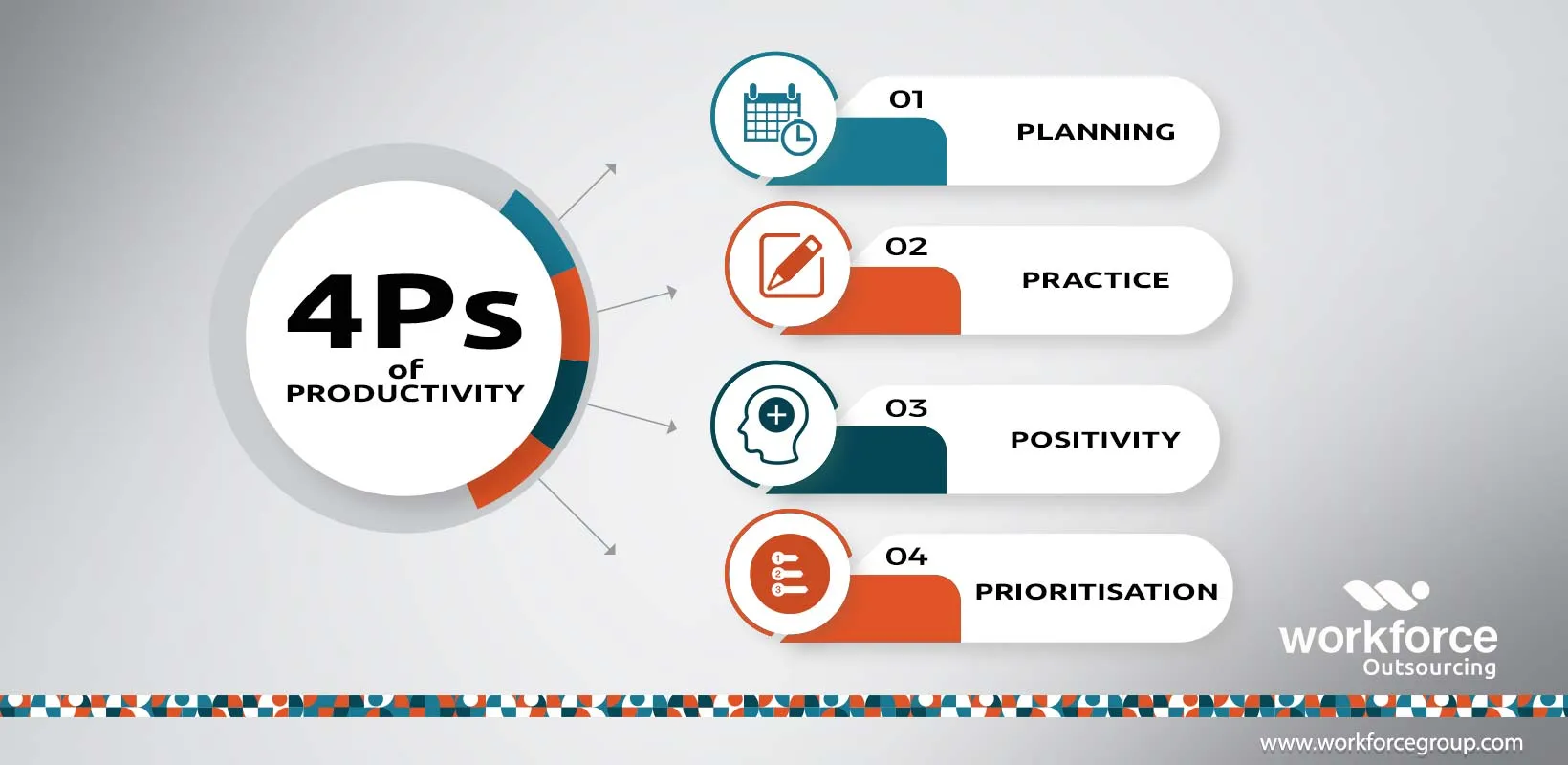If you’re reading this, you are probably a very senior HR or business leader, and the habits I am about to share are not new to you. The real question is, ‘how many of us have really adopted them?’
Research shows that workplace productivity flows from traditional economic analyses of market activity and that unpaid productive activities are usually excluded from such analyses. According to a Gallup poll, 70% of your employees are disengaged during the average workday, and this makes it harder to have a fully engaged workforce.
However, given that workplace productivity is completing tasks in a timely manner and ensuring that the company’s overall goal is achieved, employees need to roll up their sleeves and get the work done.
In order to increase efficiency & workplace productivity, everyone needs to understand and practice these 4 Ps of productivity for every workforce.
Recommended Post: How to Track your Remote Workers Productivity
The 4 Ps of Productivity That We Need in 2021
Planning
This is about envisioning and designing your yearly, monthly, weekly, and daily activities to line up with your goals. Have a plan for every single day. Else you will catch yourself executing the ones that well-meaning colleagues dump on you in the office. Planning is about intentionality and purpose. It also requires focus and time.
One thing about planning is not just having the plans at the back of your mind, be practical, write them down. Start each day by writing down what you intend to do, how you intend to do it, and ways you want to accomplish such plans. This way, you can be disciplined enough to make sure you are on track, and when you’re distracted or start losing focus, you have your written down goals to guide you and bring you back on track.
Remember the quote by author and motivational speaker Brian Tracy,
“Every minute you spend in planning saves 10 minutes in execution; this gives you a 1,000 percent return on energy!”
I would say that’s a great way to describe being productive. There are several workplace productivity tools to help with this. Find the one that’s right for you and invest in it for planning purposes.
Prioritisation
Prioritising is really about saying NO to things that don’t count and devoting our energy to the activities that will significantly increase our chances of achieving the most important goals. While we all have different times of the day when our energy levels are higher, most of us are involved in day jobs that require us to be at our most mentally alert during the earlier part of the day.
So it’s crucial to guard that time jealously by devoting it to the most challenging yet most rewarding and result-oriented workforce activities. That’s really not the time to engage in endless meetings, except they are strategic and help achieve your most important goals.
I love the quote in the book “Eat that Frog’ by Brian Tracy-
“You can get your time and your life under control only to the degree to which you discontinue lower-value activities.”
A robust approach you can master is the two-minute rule which was coined from David Allen’s book- Getting Things Done. The rule basically states that when you have a task to be done, and you see that you can complete it in two minutes or less, then start it immediately. This way, you prioritise using the time factor, and you can quickly tick such a task off your to-do list faster.
Our priorities must be clear, and we must do all we can to execute the first and delegate the lower value activities or save them for later when little mental exertion is required.
Practice
I’ll start with an illustration. If a major of your job involves presentations and writing reports, then you want to practice doing so daily by devoting a specific time to taking short courses and learning from the best. Soon enough, you’ll become great at doing it and in significantly reduced lengths of time.
That frees you up to focus on other essential activities required to deliver the goals for the day. Practice leads to consistency and exceptionalism. But more than that, it means you get the job done faster and better. Since productivity is all about getting more done in less time, this is absolutely critical to helping you get there.
Often, we all have one task that seems as though we push it to the back because it takes time and we are not so good at it, and in the end, this makes us unproductive.
To tackle this, ensure you do not wait until the last minute to get it off your list simply because you do not like the task. Instead, take it up first, practice ways to make it easier for you, and before you know it, you are very good at the task and your productivity level in the workplace will increase.
Productive people invest time and effort in practicing what they need to become great at doing to succeed.
Positivity
Imagine entering a workplace that has a very nice smell, blissful aura, well-detailed decoration, award plaques, and everywhere looking bright. How would you feel when you enter such an office? At ease and ready to get work done? Of course!
How is this connected to productivity? It’s simple. Thinking positively and expressing positivity on what you do directly improves your mindset and concentration at work. Having a positive attitude is an instant boost for a productive day because it helps you stay creative, which also means you work smarter and faster. A negative mind usually sees why something cannot be done, while a positive one is constantly thinking of how things can be done.
Needless to say, positivity has nothing to do with whether you got up on the right side of the bed. It’s about choosing to focus on possibilities despite waking up on the wrong side and also determining within yourself that you would not allow yourself to be distracted and lose focus.
Top Workplace Productivity Tips for You
Get the Right Tools
Honestly, nothing makes your workload easier than having the right tool to use every step of the way. If you want your work productivity to be at an efficient level, then know the right tools you need.
This may be a laptop, an application, or can be as simple as a pen and jotter. Ensure you have all that is needed, and you are few steps away from meeting your most productive self.
Adapt the Pomodoro Method
The Pomodoro approach states that you should take 5 minutes to break after every 25 mins. This is a powerful way of limiting distractions because, indeed, you’ve taken a break, and you can easily snap yourself back into work.
One at a Time
Often, we all think it’s our ability to multitask that makes us productive. That’s far from the truth. The best approach is to focus on one thing, completely finish such a task before moving to the next.
Manage Your Energy before Your Time
We all know our best times of the day. For some, they tend to be more focused in the morning and at night, no focus at all. While for others, it’s the other way round. Clearly understand the time you are most functional and convert your energy at that period to the most important of your tasks.
Stay Calm
Giving yourself worries clearly doesn’t solve anything. The best approach is to stay calm, create an aura of positivity around yourself and start drafting how to go about your tasks. This way, you can be assured of productivity.
Here’s hoping that you’re not only practising these habits & tips at your workplace but also challenging your employees to do the same and collectively achieving your business goals.
Next, if you’re interested in learning tips, strategies, templates, and tools that would help transform HR professionals into Business Drivers and Business Professionals into HR & Talent Champions, secure your early access to our Business & HR Africa Community Group


